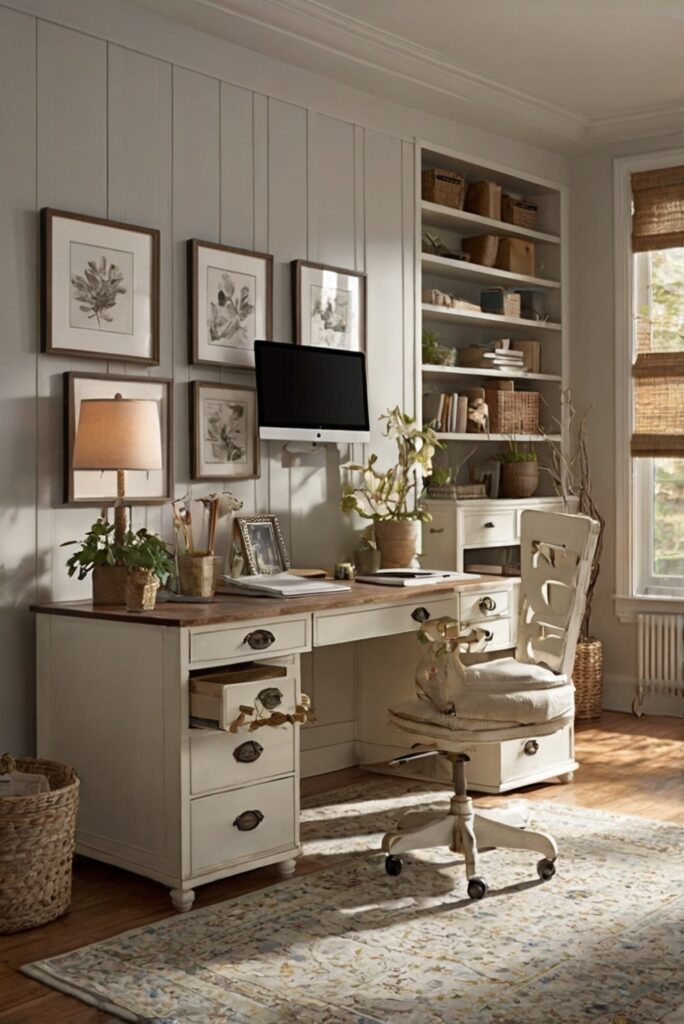Discover creative desk layouts to enhance your home office productivity and style. Whether you prefer a minimalist setup or a cozy corner, find the best designs here.
**What are the Best Desk Layouts for Home Offices?**
Incorporating the right desk layout in your home office is crucial for productivity and comfort. Some popular desk layouts include an L-shaped desk for ample work surface, a corner desk to maximize space, and a standing desk for ergonomic benefits. Consider adding in storage solutions such as shelves or filing cabinets to keep your space organized. To enhance your home office decor, choose a desk that complements the overall style of the room. Proper space planning is essential to ensure your desk layout is functional and aesthetically pleasing. Experiment with different layouts to find what works best for you!
Benefits of using a standing desk include improved posture and reduced risk of health issues related to prolonged sitting.
When designing your home office, look for color matching paint to create a cohesive and inspiring work environment. Choose calming hues for a bedroom-turned-office or vibrant tones for a creative space. Don’t forget proper lighting and comfortable seating to complete the look.
Consider consulting with interior design experts to help you with the layout and decor decisions.
What are the Best Desk Layouts for Home Offices?
1. Ergonomics:
One of the most important factors to consider when designing a desk layout for a home office is ergonomics. Your desk should be at the right height to prevent strain on your neck and shoulders. Make sure your chair is comfortable and provides adequate support for your back. Consider investing in an ergonomic keyboard and mouse to reduce the risk of repetitive strain injuries.
2. Natural Light:
Natural light can have a significant impact on your productivity and well-being. When designing your desk layout, try to position your desk near a window to take advantage of natural light. This can help reduce eye strain and improve your mood and focus throughout the day.
3. Minimalist Design:
A minimalist desk layout can help reduce distractions and create a clean, organized workspace. Consider only keeping essential items on your desk, such as your computer, notebook, and a few personal items. Use storage solutions like drawers or shelves to keep clutter to a minimum.
4. Dual Monitors:
For those who require multiple screens for work or productivity, a desk layout with dual monitors can be beneficial. This setup allows you to view multiple applications or documents simultaneously, increasing your efficiency and productivity. Make sure the monitors are positioned at eye level to prevent neck strain.
5. Standing Desk:
Consider incorporating a standing desk into your home office layout. Standing desks have been shown to reduce the risk of sedentary behavior and improve overall health. You can alternate between sitting and standing throughout the day to stay active and maintain good posture.
In conclusion, creating the best desk layout for your home office involves considering factors such as ergonomics, natural light, and minimalist design. By incorporating these elements into your workspace, you can create a productive and comfortable environment that promotes focus and creativity.
What are the Best Desk Layouts for Home Offices?
Desk Placement:
Finding the right spot for your desk is crucial. Place it near a window for natural light and a view. Avoid facing a wall directly; instead, position it at an angle for a more open feel.
Desk Size:
Choose a desk that fits your space but is also spacious enough for your work essentials. A larger desk allows for better organization and room to spread out.
Desk Organization:
Keep your desk clutter-free by using organizers, trays, and shelves. A tidy desk promotes productivity and reduces distractions.
Desk Ergonomics:
Consider the height of your desk and chair to ensure proper ergonomics. Your desk should be at elbow height, and your chair should provide good back support.
Desk Personalization:
Make your desk space your own by adding personal touches like photos, plants, or inspirational quotes. Personalizing your desk can boost creativity and motivation.
In conclusion, the best desk layouts for home offices are those that prioritize comfort, organization, and personalization. By following these tips, you can create a workspace that enhances productivity and creativity.

